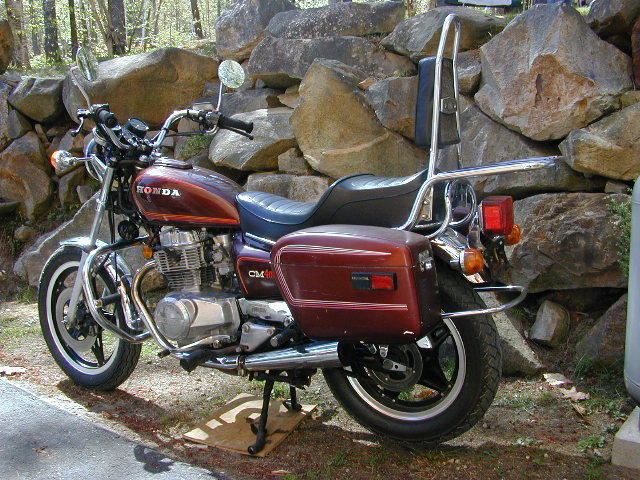Successor Honda CM450 Compression ratio 9.3:1 | Production 1978–1982 Class Standard | |
 | ||
Bore / stroke 70.7 mm × 50.6 mm (2.78 in × 1.99 in) | ||
The Honda CM400 was a street bike produced by the Honda Motor Company from 1979 to 1982, part of a series of motorcycles with the prefix 'CM' using various engine capacities. It was a precursor to the Honda Rebel series of motorcycles. The bike had a 395 cc (24.1 cu in) air cooled parallel twin cylinder engine. It was equipped with electric start and electronic ignition. Models included the CM400A (Automatic), CM400C (Custom), CM400E (Economy) and CM400T (Tach). The CM400C was produced only in 1981 making it one of the more rare model types.
The Honda CM series all generally resembled the older-style flat-seat bikes from the 60s and 70s, with the exception of a slightly raised passenger area seat and small plastic fairings for the battery and electrical. These are "standard" style motorcycles but do have some elements of the cruiser (stepped seat, increased fork angle, extra chrome).
The CM400 series includes only a speedometer and three indicator lights (neutral, oil pressure, high beam) with a tachometer for the C and T models. The E (economy) model had wire wheels and drum brakes, while the others had Comstar wheels and a front disk/rear drum braking setup. While not particularly powerful, the CM400's handling makes it one of the great starter bikes.
Many engine components are common with the Honda CB400T models from the same year. The parallel twin engine has three valves per cylinder (two intake, one exhaust) and a five-speed manual or two-speed automatic transmission. In 1982, the CM engine was bored out to a 447 cc engine and the series was renamed CM450
